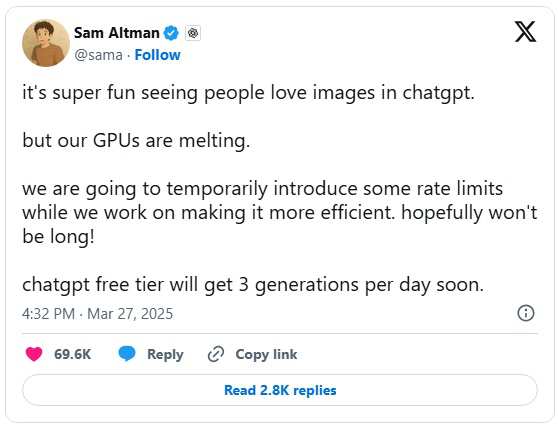Action Figure Fad Takes Over OpenAI

Action Figures: The Social Media Trend
Recently, social media has been buzzing with posts featuring people, pets, and even fictional characters transformed into action figures. These playful images often come with fun accessories, harking back to the childhood nostalgia of wanting such toys for birthdays or special occasions.
The Action Figure Craze
If you haven’t joined this trend, it’s a sign of either fortunate friends or a preference for a quieter digital life. For those curious about what the buzz is all about, imagine a beloved character or pet depicted as an action figure in a colorful environment. Here’s an example of such an image:
For many, the reaction can swing between laughter and a headshake of disbelief. While it’s amusing to see oneself as a toy or cartoon character, there’s a serious side to consider regarding the technology that makes these creations possible.
The Irony of Advanced Technology
At first glance, it might seem frivolous to request a personalized action figure from an advanced artificial intelligence model. However, the real irony lies in the immense computing power needed for these seemingly light-hearted tasks. For instance, OpenAI’s CEO, Sam Altman, humorously lamented on social media about the strain new user trends are putting on their computational resources, with some GPUs reportedly overheating due to the high demand for image generation.

Environmental Considerations
Beyond just the computing load, there are environmental impacts worth noting. Research from Cornell University highlighted that training extensive AI models like GPT-3 could lead to significant resource consumption. For example, it was estimated that training this model could result in the loss of around 700,000 liters of fresh water. Furthermore, each query on ChatGPT utilizes approximately 3 watt-hours of electricity—about ten times more than a typical Google search. Overall, the electricity needed for training large AI models may reach up to 10 gigawatt-hours in a single session, raising concerns about energy sustainability in the AI sector.
The Future of AI and Human Interaction
As we rely more on AI for entertainment and everyday tasks, there’s a lingering question: When AI becomes fully self-aware, will we even notice? It appears that as long as these systems continue to entertain us with engaging content like action figures and cute animal videos, we may remain blissfully unaware of the broader implications or advancements happening behind the scenes.
Exploring More Resources
For those interested in learning more about AI and its capabilities, visit the OpenAI Website.
Related Articles
- OpenAI Adds New Tools for Building Agents
- OpenAI Releases New Development Tools
Stay updated about new articles and insights by signing up for our weekly newsletter, subscribing to our RSS feed, or following us on platforms like Twitter, Facebook, and LinkedIn.




